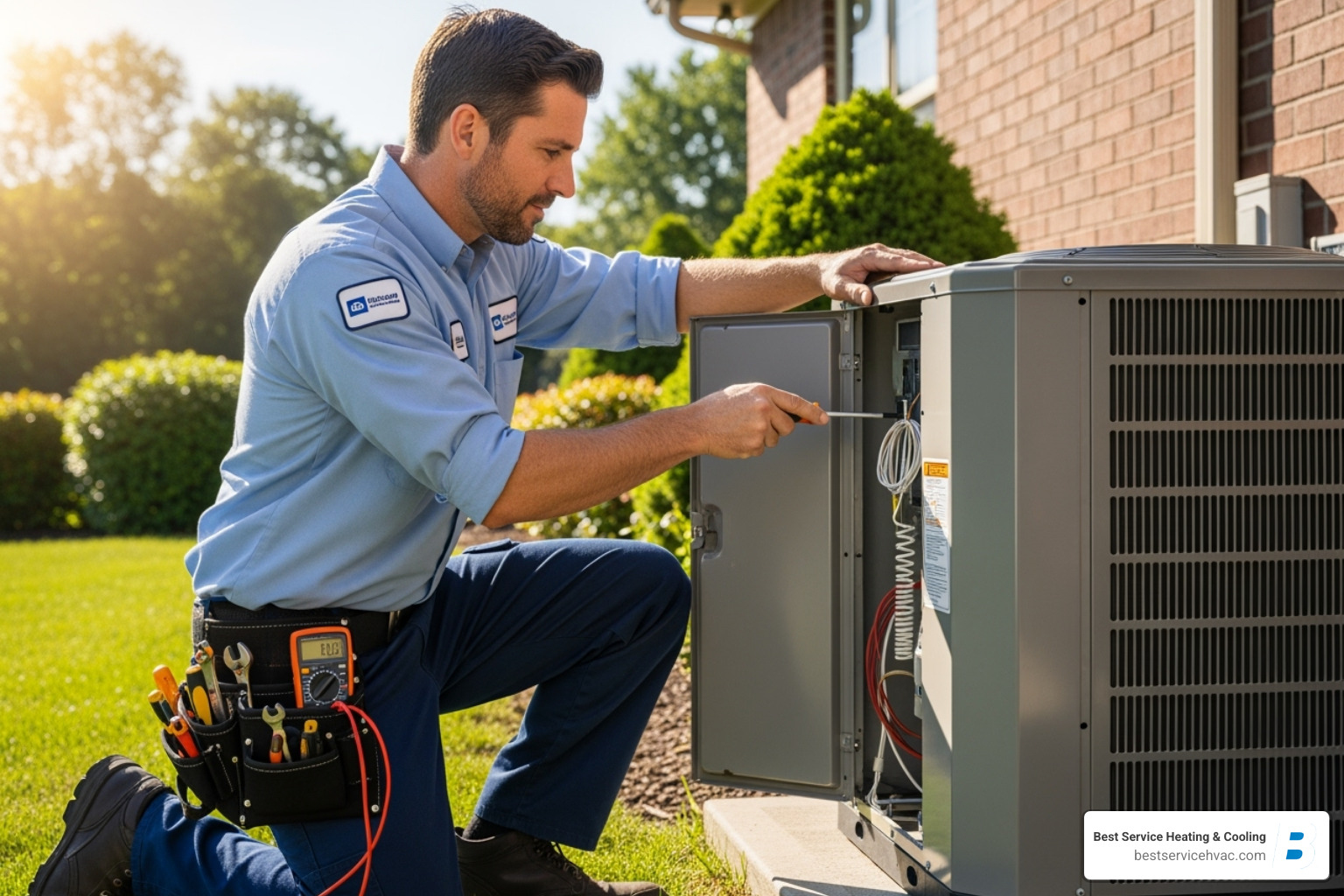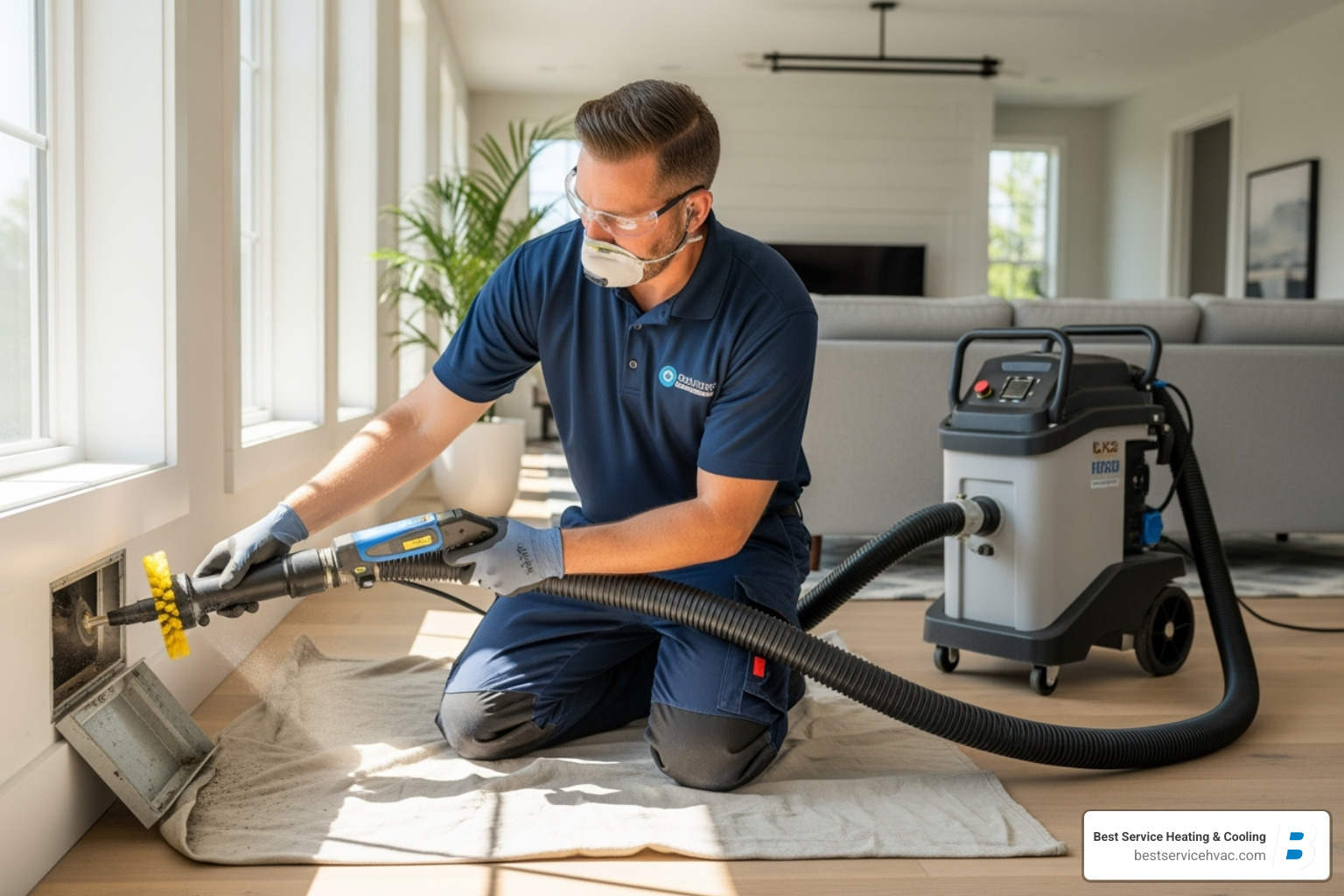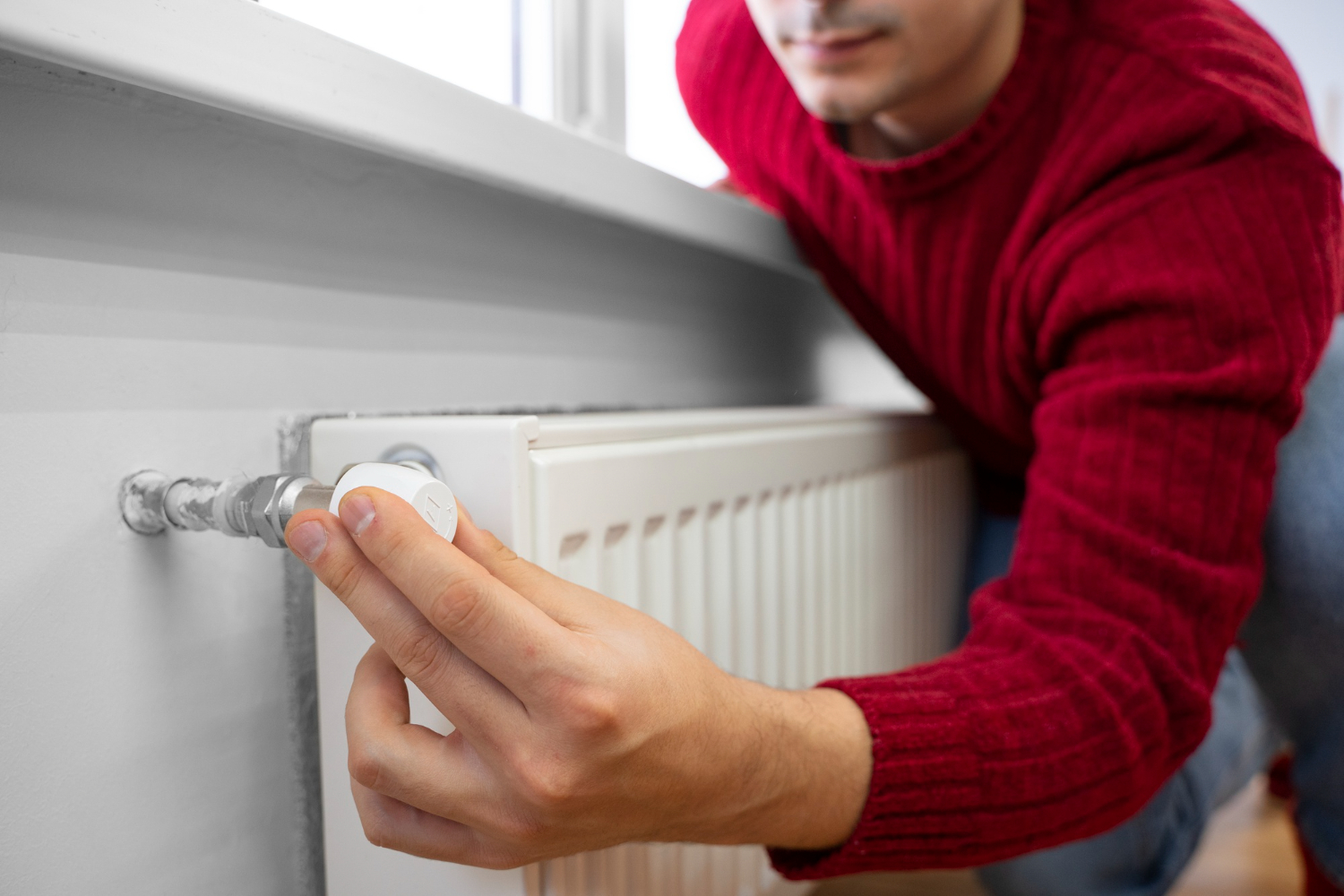Poor airflow from your AC vents can be more than just an inconvenience. It can make your home feel unevenly cooled, disrupt your daily comfort, and even drive up your monthly energy bills. If some rooms in your house feel like a refrigerator while others stay warm no matter how long the AC runs, that’s a sign something isn’t working the way it should. Uneven airflow is a common issue many homeowners in Bexley deal with, especially during the peak of summer when your cooling system works the hardest. Left unattended, small issues tied to airflow can turn into bigger, more expensive problems in the long run.
Staying cool during a Bexley summer shouldn’t be a struggle. It doesn’t take complex tools or deep technical knowledge to spot the early signs of airflow trouble. By understanding what causes airflow issues and how to recognize them, you’re in a better position to act before discomfort sets in.
Common Causes Of Poor Airflow
Several issues can cause weak or inconsistent airflow from your AC vents, and they’re often hidden from plain view. Instead of assuming your entire cooling system is broken, it’s helpful to narrow the source down to a few known problem areas.
Here are some of the most common causes of poor airflow in residential AC systems:
– Dirty or Clogged Air Filters: This is often one of the quickest issues to check. When filters get jammed up with dust and debris, they block air from moving through freely. As a result, airflow drops and your AC has to work harder, which strains the system.
– Ductwork Issues: Ducts have a big role in delivering cool air around your home. Leaks, crushed areas, or collapsed sections can interfere with that. Sometimes ducts are simply too small or poorly designed, limiting how effectively air flows through them.
– Frozen Evaporator Coils: When air doesn’t pass over the coils properly, ice can form. Once the coils freeze, they stop sending cool air through the system altogether.
– Blower Motor Problems: If the fan inside your system isn’t working the way it should, the air doesn’t move efficiently. That can make it feel like not enough cool air is coming out of the vents even when the system is running.
For example, a homeowner in Bexley noticed their main floor wasn’t getting cool even though the upstairs bedrooms were freezing. After inspecting the vents and changing the filter, the issue was traced back to torn insulation around one of the duct lines in the crawl space, a fix that restored even airflow throughout the home.
Pinpointing the cause early can save you from prolonged discomfort and help protect your system from further stress.
Signs That Your AC Vents Aren’t Working Properly
Spotting the warning signs early helps prevent rising energy bills and long repair windows later. The sooner you notice there’s an issue with airflow, the easier it is to correct it with a targeted solution.
Watch for signs like:
– Little to no air blowing from some vents
– Uneven temperatures in different parts of your home
– Warm air coming from vents when the AC is set to cool
– Whistling noises or sounds of air struggling to move through vents
– A sudden rise in humidity levels indoors
If you’ve walked by a vent and felt barely any air coming out, or if you’ve cranked the thermostat lower only to notice no difference in room temperature, these clues often point to blocked or restricted airflow. It’s helpful to check wall or floor vents regularly to ensure nothing is blocking them. Furniture, dust, or closed louvers can all cause problems.
For a more accurate understanding of how well your system is pushing air, consider using a small airflow meter. These tools measure the strength of air exiting your vents and can help you identify whether some areas are weaker than others. Many are now available as smartphone-connected devices, making it easier for homeowners to check without special tools. Still, figuring out what’s causing the issue, especially if it goes beyond filters or visible vent blockages, may require a deeper look from trained professionals.
Simple Fixes That Can Improve AC Airflow
Once you’ve identified signs of poor airflow and pinpointed a likely cause, there are several steps you can take to start resolving the issue. Some are straightforward, and others require help from trained professionals.
Here are the most effective ways to restore and improve airflow from your AC vents:
1. Replace Dirty Air Filters
Filters collect dust, pet hair, pollen, and other particles to keep your indoor air clean. But when they become clogged, they also stop air from passing through efficiently. Checking and replacing them once a month during the summer is one of the easiest ways to improve airflow.
2. Clear the Supply and Return Vents
Make sure vents are fully open and not blocked by rugs, furniture, or curtains. Even partially covered vents can reduce cooling performance in specific rooms. Use a vacuum to clear dust from the vent grilles.
3. Schedule a Duct Inspection
Ductwork can’t be fully inspected without professional equipment, but you can check visible areas in your basement or attic for signs of damage, disconnection, or dirt around joints. If you suspect a leak, sealing with foil-backed duct tape or mastic might solve the issue, though a full inspection is still recommended.
4. Address Mechanical Component Issues
If the blower motor is malfunctioning or if the evaporator coil is frozen, airflow will continue weakening no matter how many other adjustments you make. These parts are located inside the indoor unit and should only be handled by qualified professionals who have the training and tools to safely repair or replace them.
Ignoring airflow issues won’t make them go away. If left unchecked, they can put a strain on your entire AC system and impact energy use. Investing time into these basics can, in many cases, bring comfort back without needing extensive repairs.
Keeping Your System Running All Summer in Bexley
Once airflow has improved, it’s important to make sure those results last. Preventing airflow issues before they happen is the best way to avoid sudden breakdowns during the hottest weeks in Bexley. A well-maintained system requires less power to cool your home and helps you avoid the hassle of uneven temperatures.
Start by following a routine maintenance schedule:
– Change filters every 30–60 days during peak usage
– Keep vents and registers dust-free and unobstructed
– Inspect visible sections of ductwork two to three times a year
– Schedule a cooling system inspection before each summer
Homeowners who stick with routine maintenance typically notice fewer comfort issues as temperatures rise. And when something feels off, such as a room suddenly staying warm despite a low thermostat setting, it helps to act quickly. Delays often mean more disruption and potentially more costly service.
Maintaining consistent airflow keeps every room in your home cool and comfortable. That stability matters when you’re dealing with weeks of summer heat. And when problems feel too complex to fix yourself, working with trained technicians who know the equipment inside and out ensures reliable outcomes you can feel throughout your entire home.
If persistent airflow issues continue to affect your home comfort despite regular maintenance, our team at Best Service Heating and Cooling is ready to help with professional solutions. You can rely on our experts for quality AC repair in Bexley to identify and fix any underlying problems, restoring balanced and efficient cooling throughout your home. For a quick estimate or to book a service visit, please contact us today.




